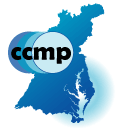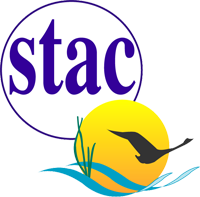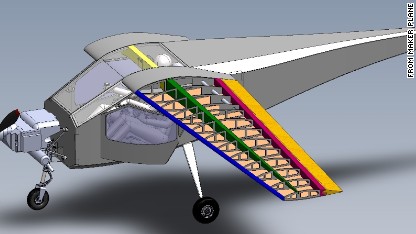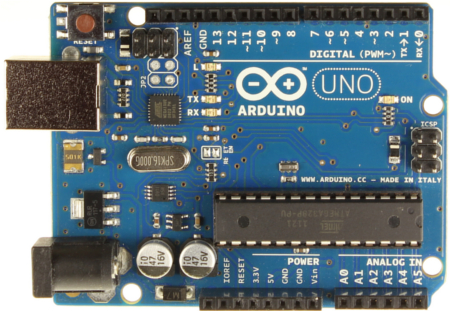Chesapeake Community Modeling Program
CCMP Newsletter | August 2013
Volume 6, Issue 2
Introduction
Geetings! We hope you're having a great summer. Please enjoy this edition and, as always, please contact Dave Jasinski if you have any questions or comments. Also, please feel free to contact us if you have any ideas for future content.

Contents
1. CCMP News in brief
2. Open Source On the March
3. Featured Modeler: Gopal Bhatt
4. Featured Model: HSPF
5. Upcoming Meetings
1. CCMP News in Brief
STAC Multiple Models Workshop
 As detailed in our last newsletter the Chesapeake Bay Program's Scientific and Technical Advisory Committee (STAC) held a workshop titled "Multiple Models for Management in the Chesapeake Bay" on February 26-26, 2013. The purpose of the workshop was to discuss the utility of a multiple modeling approach in the environmental management of Chesapeake Bay. Regional and national technical and management experts were invited to attend and participate. As promised we present here the preliminary findings of the workshop.
As detailed in our last newsletter the Chesapeake Bay Program's Scientific and Technical Advisory Committee (STAC) held a workshop titled "Multiple Models for Management in the Chesapeake Bay" on February 26-26, 2013. The purpose of the workshop was to discuss the utility of a multiple modeling approach in the environmental management of Chesapeake Bay. Regional and national technical and management experts were invited to attend and participate. As promised we present here the preliminary findings of the workshop.
Primary findings:
- Quantifying model uncertainty is critical to good science and rational decision making. Multiple modeling can help quantify uncertainty.
- There are different ways to implement multiple models (modular community models, ensemble models, comparisons for pilot studies or testbed areas). The common principle is that multiple lines of evidence, multiple data sets, and multiple algorithms make findings stronger.
- Multiple models already exist, and need to be integrated into CBP modeling and decision making.
- Modeling is inexpensive relative to the cost of a wrong decision.
- Multiple models are a legal asset rather than a liability.
- Managers and the public need more information about modeling, model uncertainty, and multiple models.
Recommendations for Chesapeake Bay Program:
- Implement some form of multiple, community, or participatory model for each major decision-making model (airshed, watershed, and estuary) and analyze the models to quantify skill, estimate prediction uncertainty, and inform adaptive management.
- Determine the appropriate level of spending on monitoring, modeling, and research relative to the cost of sub-optimal decision making.
- Develop ways to better communicate modeling, uncertainty, and multiple model results to partners, decision makers, and the public.
Recommendations for Further Research:
- Develop better ways to integrate stakeholders into participatory modeling.
- Study the optimal investment in modeling for environmental regulation.
- More study of legal implications of multiple models in environmental regulation is needed.
As you can see, if some or all of the recommendations become part of the modeling process at the Chesapeake Bay Program Office, it would represent a significant departure from "business as usual". CCMP is excited to see how this progresses and we will keep you up to date.
Tributary Hypoxia
CCMP member Harry Wang presented an investigation that he and graduate student Isaac Irby conducted on the origin of hypoxia in tributary rivers of Chesapeake Bay. The results of this investigation were presented at the Bay Program Quarterly Modeling Review meeting. Using Bay Program monitoring data, they are attempting to determine if hypoxic waters originate within the tributary rivers or if it is advected there from the mainstem bay. They examined data for the Potomac, Patuxent, and Patapsco Rivers and determined that hypoxia seems to be developing in the rivers independently of the mainstem and in most cases, prior to the mainstem. However, hypoxia onset in the mainstem is related to river flow, occurring earlier in years with higher flows. The presentation can be viewed at http://www.chesapeakebay.net/S=0/calendar/event/18875/
2. Open Source on the March
The Open Source Airplane
 If anyone out there has ever dreamed of building their own airplane but were put off by the cost, complexity, or that the plans were not open source, you may soon get your chance to fly. MakerPlane is an Open Source Aviation group that is developing plans to construct an airplane that will be made available for free. Their mission (from their website):
If anyone out there has ever dreamed of building their own airplane but were put off by the cost, complexity, or that the plans were not open source, you may soon get your chance to fly. MakerPlane is an Open Source Aviation group that is developing plans to construct an airplane that will be made available for free. Their mission (from their website):
“... to create innovative and game-changing aircraft, avionics and related systems and the transformational manufacturing processes to build them. As a result of this aim, aircraft can be built with consistent, repeatable and highly accurate processes which create safer flying at lower cost. ”
Their goal is for the total contruction cost of the aircraft to be less than $15,000. This assumes that you have access to CNC machining equipment. MakerPlane has recently started a crowd sourced funding campaign to raise $75,000 to complete the aircraft and provide the Open Source plans. To find out more, go to http://makerplane.org/ .
Open Source Microprocessor
 Staying on the topic of open source and do-it-yourself, two satellites were launched recently that each contained 15 open source microprocessors. These processors, called Arduino processors, can be home built or bought (for around $30) and programmed using opensource software that can be downloaded for free. The satellites were built by a company called Nanosatisfi. For a few hundred dollars, anyone will be able to rent time on the satellites and program them to do whatever they want, using the open source software.
Staying on the topic of open source and do-it-yourself, two satellites were launched recently that each contained 15 open source microprocessors. These processors, called Arduino processors, can be home built or bought (for around $30) and programmed using opensource software that can be downloaded for free. The satellites were built by a company called Nanosatisfi. For a few hundred dollars, anyone will be able to rent time on the satellites and program them to do whatever they want, using the open source software.
The Arduino processor was developed in 2005 by instructors at the Interaction Design Institute Ivrea in Italy. They wanted to give students and artists a way to make their projects interactive. To find out more about Arduino, go to http://www.arduino.cc/ .
3. Featured Modeler: Gopal Bhatt
 Chesapeake Bay Program Office
Chesapeake Bay Program Office
410 Severn Avenue
Annapolis, MD 21403
Education:
B.Tech., 2004, Agricultural and Food Engineering, Indian Institute of Technology.
M.Tech., 2004, Water Resources Development and Management, Indian Institute of Technology.
Ph.D., 2012, Civil Engineering, Pennsylvania State University.
Gopal Bhatt is a watershed modeler at the Chesapeake Bay Program Office. His interests include water resources management and numerical simulation of watershed processes with an emphasis on bridging the gap between geohydrologic data and hydrologic modeling. For his Ph.D. Gopal’s work focused on the development and application of The Penn State Integrated Hydrologic Modeling System (PIHM). PIHM is a state-of-the-art open source community hydrologic/watershed model that was developed at Penn State University. Gopal’s studies have included efforts to use PIHM to: predict, identify and classify wetlands; assimilate and reanalyze diverse geohydrologic data sources; and carry out real-time watershed modeling using a real-time hydrologic monitoring network. Gopal has also explored the use of cloud computing strategies for integrating PIHM, GIS, and web-services in data-intensive hydrologic modeling, and worked on the development of efficient frameworks for accurate representation of geohydrologic data in distributed hydrological models.
Gopal’s current efforts are focused on the continued development and refinement of the Chesapeake Bay Program’s watershed model for assessment of nutrient loads and water quality standards, and specification of TMDLs at both regional and local watershed scales. The CBP watershed model is an open source implementation of HSPF, the Hydrologic Simulation Program Fortran (see featured model below). Specifically, Gopal’s work at the Bay Program has been focused on watershed model operation, calibration, analysis, verification and development of uncertainty assessment tools. He has also been involved in studies of land-use and climate change and the development of the phase-6 CBP watershed model. In addition, Gopal provides both modeling team and modeling workgroup support. As a result, he has been instrumental in the Bay Program’s continuing efforts to respond to the needs of state collaborators in efforts to implement best management practices aimed at reducing nutrient loads to the bay.
4. Featured Model: HSPF
Our featured model this issue is the Hydrologic Simulation Program - Fortran (HSPF). HSPF started out as the Stanford Watershed model. Over the years, water quality capabilities, a fortran version, pre- and post-processing capabilities and the ability to use the USGS WDM system were added. It also incorporated the Agricultural Run-off Model (ARM) and the Non-Point Source Model (NSM).
 |
| HSPF model segments for the Chesapeake watershed |
HSPF can simulate watershed hydrology and water quality for both organic and inorganic pollutants. It takes in information on precipitation, solar radiation, land use patterns, and land management practices to simulate watershed processes. Time steps of 1 minute to 1 day can be used and periods of minutes to hundreds of years can be simultated. HSPF has been applied in hundreds of watersheds around the world, ranging from the Chesapeake Bay watershed down to experimental plots of a few acres near Watkinsville, GA. HSPF can be downloaded from multiple locations around the web including USGS.
5. Upcoming Meetings
 8th International Congress on Environmental Modelling and Software (iEMSs)
8th International Congress on Environmental Modelling and Software (iEMSs)
June 15-19, 2014, San Diego, California link
Chesapeake Community Model Program
http://ches.communitymodeling.org/
Chesapeake Research Consortium
Edgewater, MD
410-798-1283